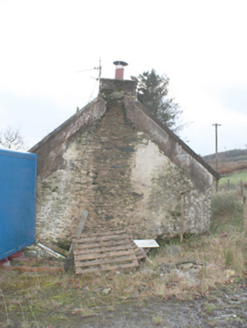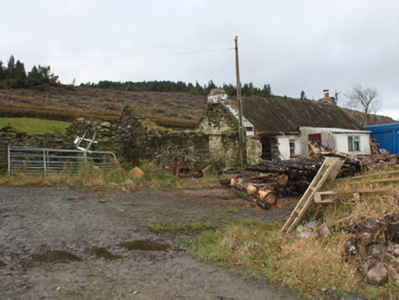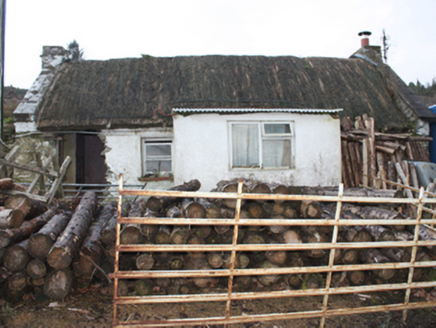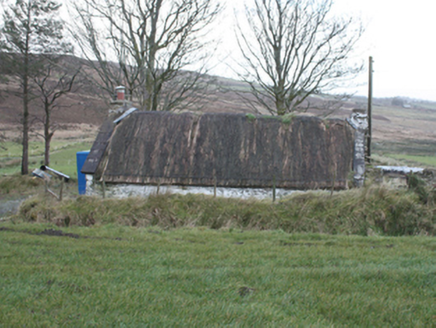Survey Data
Reg No
40902127
Rating
Regional
Categories of Special Interest
Architectural, Technical
Original Use
House
In Use As
Outbuilding
Date
1840 - 1880
Coordinates
251782, 437094
Date Recorded
21/11/2008
Date Updated
--/--/--
Description
Detached three-bay single-storey vernacular house, built c. 1860, having modern entrance porch and extension to the front elevation (east) Now in use as outbuilding with ruined single-storey outbuildings attached to south gable. Pitched thatch roof with smooth rendered gable-ended chimneystacks. Roughcast rendered rubble stone walls. Square-headed window openings with one-over-one pane horned timber sliding sash windows and rendered sills. Square-headed door opening to porch with timber panelled door. Set within own grounds down a long lane from the road. Located to the west of Moville in upland area.
Appraisal
Although no longer in use as a dwelling and now dilapidated, this relatively intact example of a vernacular house retains its early form and character, and is an appealing feature in the scenic rural landscape to the west of Moville. Its integrity is enhanced by the retention of the timber sliding sash windows. Modest in architectural ambition it exhibits the simple and functional form of vernacular building in Ireland. Of particular interest in the survival of the thatch roof, which is now sadly becoming increasingly rare in Donegal. The rounded roof is a typical feature of thatched houses located close to the sea in exposed areas in the north-west of Ireland, while the metal bars to the eaves were used to tie ropes over the roof to secure it against the prevailing winds, as is the case here at Drung. The form of this building and location of the chimneystacks suggests that this building is of the ‘direct entry’ type that is characteristic of the vernacular tradition in north-west Ireland. Sensitively restored, this building would make a strongly positive contribution to its pleasant rural location, and would be an integral element of the built heritage of the local area. The simple rubble stone outbuilding to site adds to the setting and context.







